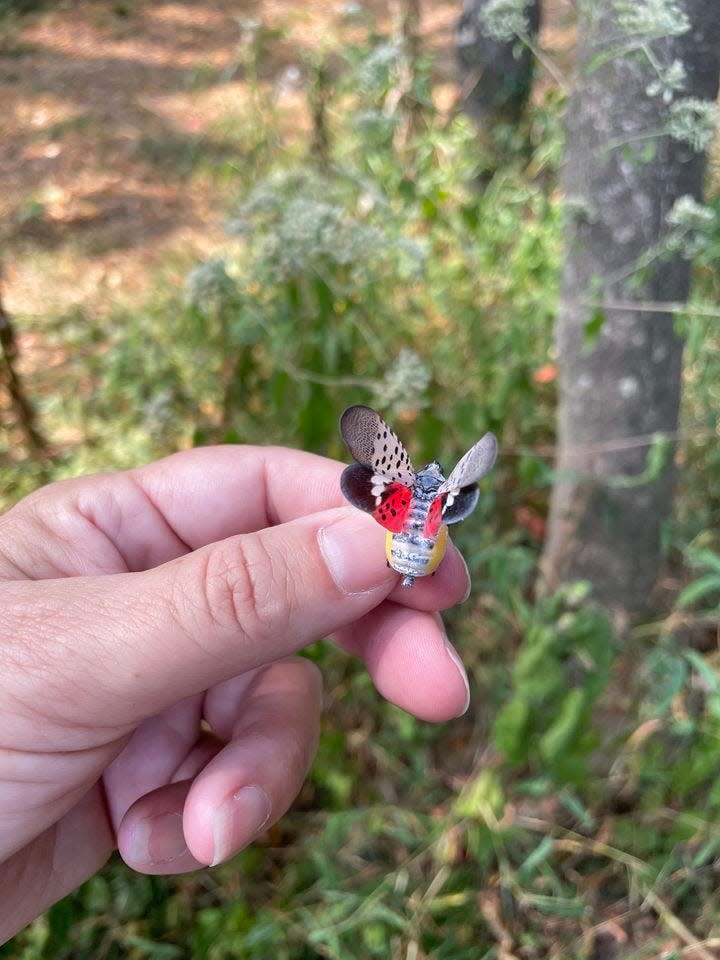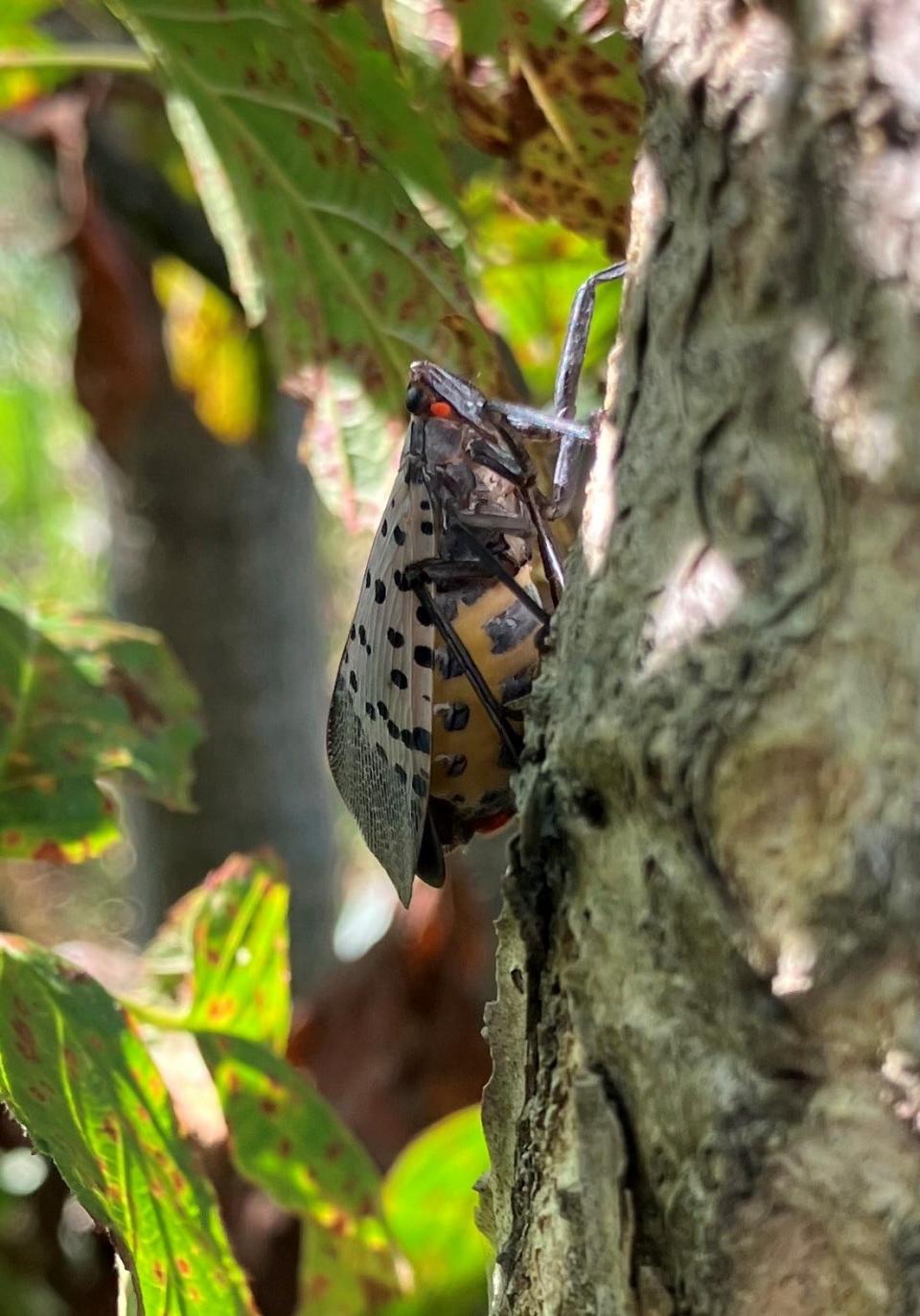Spotted lanternfly found in Nashville area. Why Tennessee officials want you to kill it.
The spotted lanternfly has been spotted in Davidson County, making Tennessee the 16th state to identify the insect since it was first discovered in 2014.
“Our Plant Certification Section inspectors responded to a tip from a vigilant citizen about a sighting of spotted lanternfly,” Commissioner Charlie Hatcher said in a statement from the Tennessee Department of Agriculture. “This non-native insect is harmful to a range of crops and natural resources in our state. Wood products businesses and fruit growers could be especially vulnerable, and we want your help in watching out for this pest and eliminating any you find.”

So far, it has only been identified in Davidson County. The Tennessee Department of Agriculture advises residents and travelers to check their vehicles to reduce the spreading of the insect's eggs.
What's the problem with the spotted lanternfly?
The spotted lanternfly is an invasive plant hopper that was first detected in 2014. It is a sapsucking insect that feeds on water and nutrients in plants. It is an invasive species that gathers in large numbers on host plants and flat surfaces.
Adult spotted lanternflies are prominent in late summer and early fall. They are about one inch long and half an inch wide with spotted and red wings. Spotted lanternflies gather in large numbers on plants where they feed on nutrients and water.
Why are spotted lanternflies bad?
It acts as a plant stressor which can make the plant more susceptible to other insects and diseases. The SLF also produces a honeydew as it feeds. The honeydew can coat areas underneath infested plants which causes mold to grow underneath.
The can spread long distances when people and vehicles move infested material or items containing egg masses, the Tennessee Department of Agriculture says.
What attracts spotted lanternflies? The tree of heaven and more

The spotted lanternfly primarily favors the tree of heaven which is an invasive species of tree in the United States. The tree is pretty prevalent across the state, according to a map tracking invasive species from the University of Georgia.
They can also attack grape vines and fruit trees. Spotted lanternflies will also infest maple, poplar, and walnut trees.
"Infested trees may exhibit wilting, defoliation, dieback, yield loss, and in severe cases, death," the Department of Agriculture statement says.
What to do if you find a spotted lanternfly?
According to the Tennessee Department of Agriculture, people who see the fly or an egg mass should take photos, fill out a pest identification form, destroy the insect or egg masses by stomping on them or dousing them with rubbing alcohol, and check vehicles, boats and campers to make sure there are no insects or eggs there.
Jordan Green covers trending news for The Commercial Appeal. She can be reached via email at Jordan.Green@commercialappeal.com or on Twitter @_green_jordan_
This article originally appeared on Memphis Commercial Appeal: Spotted lanternfly found in Nashville area, Tennessee officials say

